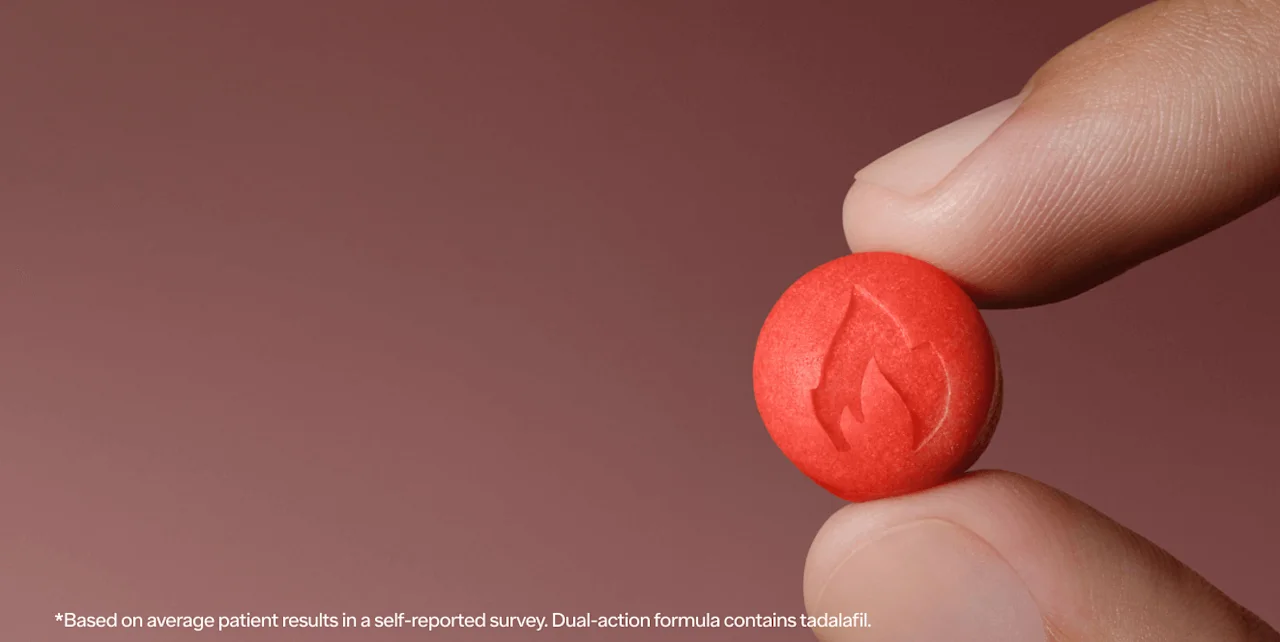Here's what we'll cover
There’s a genius in its simplicity. But people, as we know, are a lot more complicated than that. There are those among us who enjoy a little (or a lot of) pain now and then. For these people, when they seek “pain management,” it’s not a doctor they’re going to visit, but rather, a dominatrix or the like.
Masochism is hardly the most uncommon sexual interest. It’s so common it’s one of the four letters that make up the catch-all for all things kinky, the “M” in BDSM (bondage/discipline, domination/submission, sadism/masochism). A 2017 survey on sex and fetishes found just over ten percent of respondents were somewhat or very interested in pain as a part of their sex lives (Herbenick, 2017).
Sexual masochism has a broad spectrum, though. One’s kink can range from enjoying a little spanking or hair-pulling at the milder end to cock and ball torture (the subject of this article) at the other extreme. Let’s get the ball rolling, shall we?
What is cock and ball torture?
Chances are, if you clicked on this link, you might already know the answer to this question. And if you don’t, it’s not hard to figure out from the name. In a nutshell, cock and ball torture is a sexual activity in which the male genitals are subjected to pain, from mild discomfort to extreme agony.
Is it some kind of disorder to want this?
Medically speaking, not quite. The current Diagnostic and Statistical Manual of Mental Disorders (DSM-V) considers this type of fetish to be on the spectrum of normal sexual behavior. However, if such interests start getting in the way of daily living, that’s when they’re considered a disorder (American Psychiatric Association, 2013). This means that if your interest in cock and ball torture or other BDSM behaviors make it hard for you to have a healthy relationship, impact your ability to work or have friends, or leads to other social problems, that’s when it qualifies as a problem.
BDSM practitioners may undoubtedly be comfortable with their interests. However, one recent survey found nearly half of people partaking in BDSM were afraid to talk to their healthcare provider about them. This reluctance can be a problem, as some BDSM activities can have medical repercussions (Waldura, 2016). As you can probably imagine, cock and ball torture ranks high among those.
Let’s take a look at some of the most common types of cock and ball torture, potential downsides, and how to practice this as safely as possible.
Types of cock and ball torture
While cock and ball torture may not be everyone’s cup of tea, there are multiple ways to engage in these behaviors if this interests you. Of course, it’s essential that you have open and honest communication about these desires with any sexual partners and that everyone involved is comfortable with these behaviors.
Let’s look at some of the different types of cock and ball torture. Testicle crushing
Testicle crushing
Testicle crushing is one of the more common activities in cock and ball torture. A squeeze of the hand will do for some. For those who need a little more, there are sex toys called ball crushers or nutcrackers. These are clamps that fit around the scrotum, which the dominant partner slowly tightens. Some masochists prefer the quick, sharp pressure of kicks or other strikes over the slow, constant pressure these clamps supply.
The obvious possible adverse effect, in either case, is testicular trauma. It takes about 110 pounds of direct force to rupture a testicle (Blok, 2019). One could easily hit that by pushing the boundary too far with a nutcracker. As for kicking, 110 pounds is usually a bit more force than most people can generate. That doesn’t mean that a lot of other damage can’t happen, though.
Any blunt force trauma can cause blood clots, cutting off the blood supply to the testicle. This is called a testicular infarction. An infarction left untreated can very quickly lead to atrophy and “death” of the testicle within hours. Other health risks include abscesses (pockets of infection) and loss of fertility (Adlan, 2014).
Testicle stretching
If you’re up for discomfort but crushing sounds like too much ouch in the pouch, testicle stretching might be preferable. Simply put, this consists of pulling the testicles away from the body. One can do this manually or with devices such as ball stretchers. Ball stretchers are donut-like rings that clamp around the scrotum above the testicles, forcing the testicles downward. Using increasingly larger stretchers causes more extreme discomfort as the testicles are pulled further from the body. If one hangs weight from these rings, it’s known as a “parachute.”
Testicle stretching doesn’t have the immediate danger of crushing, but it still may pose risks. One study on lab rats found that, following sixty seconds of testicular stretch, damage was visible on the vas deferens (sperm ducts) and testes 28 days later (Ceylan, 2003).
Penis flogging and wax play
Among the most common ways of torturing someone’s penis are flogging and wax play (dripping hot wax onto the genitals). These actions carry the same risks as they would anywhere else on the body. Flogging can cause lacerations, which may lead to infection. Hot wax, especially microwave-melted wax, can reach dangerous temperatures that may lead to significant burns (Chang, 2011). Many who’ve purchased a home waxing kit and wound up in the local emergency room have found this out the hard way.
Penis trampling
Trampling, meaning having someone step or stomp on your penis, might be of interest to some looking to take things up a notch. But in addition to the potential damage from abrasion, the possibility of penile fracture should be kept in mind. Penile fracture can occur even during regular sexual intercourse, let alone more forceful behaviors like trampling (Kati, 2019).
Urethra play
There are even more advanced forms of cock and ball torture. Urethral play, the insertion of objects into the urethra, is enjoyed by some. Usually, the inserter does this with thin metal probes called sounds. Over time they graduate to increasingly larger sounds to expand the urethra. For some, a sound is not enough, and they move on to other objects.
Urethral play is not as rare as you might think. One hospital in Chicago reported seeing about two patients per year with objects stuck in their urethras, and some people presented more than once. Complications included bloody urine, urine blockage, and urinary tract infections (Palmer, 2016)
Always treat urethral injuries seriously, as they can lead to more severe conditions, including incontinence, erectile dysfunction, and even gangrene. Urethral injury can also lead to a condition called urethrocutaneous fistulae, which are openings in the penile shaft through which urine can leak out (Nelson, 2020).
Erotic electrostimulation
Erotic electrostimulation is another type of cock and ball torture that has its share of fans. As with most types of play we’ve discussed here, there’s a spectrum of approaches. For some, a gentle, tickle-like buzz is desirable. Others might push their limits with something closer to being tased.
The dangers in electrostimulation, or e-stim, tend to come from improper equipment. The safest forms are transcutaneous electrical nerve stimulation (TENS) or electrical muscle stimulation (EMS). These are over-the-counter therapeutic devices that don’t put out enough power to do harm. However, it’s not recommended to use electrostimulation devices if you have a pacemaker, as the electrical stimulation might disrupt the function of the pacemaker (Digby, 2009).
Direct application of electrodes to the genitals is dangerous. Many who do practice this use unregulated homemade equipment. These self-hacked e-stim devices can easily malfunction, causing severe electrocution. Even low voltage electrocution can cause cardiac arrest (Zemaitis, 2020).
Safe cock and ball torture
This article probably makes it sound like cock and ball torture is just a recipe for disaster. But it doesn’t have to be. Certainly, more extreme practices carry significant risks, but it’s possible to perform light cock and ball torture with safety in mind. Follow precautions, be careful, and maintain open communication with your sexual partners.
Seek medical attention from your healthcare provider immediately if you injure yourself during any BDSM practices. And don’t worry, your healthcare provider has seen it all before.
DISCLAIMER
If you have any medical questions or concerns, please talk to your healthcare provider. The articles on Health Guide are underpinned by peer-reviewed research and information drawn from medical societies and governmental agencies. However, they are not a substitute for professional medical advice, diagnosis, or treatment.
References
Adlan, T., & Freeman, S. J. (2014). Can ultrasound help to manage patients with scrotal trauma? Ultrasound (Leeds, England), 22 (4), 205–212. doi: 10.1177/1742271X14545911. Retrieved from https://pubmed.ncbi.nlm.nih.gov/27433221/
American Psychiatric Association (APA) (2013). Diagnostic and statistical manual of mental disorders (Fifth Edition). American Psychiatric Association . Retrieved from https://dsm.psychiatryonline.org/doi/10.1176/appi.books.9780890425596.dsm19
Blok, D., Flannigan, M., & Jones, J. (2019). Testicular rupture following blunt scrotal trauma. Case Reports in Emergency Medicine, 2019 , 7058728. doi: 10.1155/2019/7058728. Retrieved from https://pubmed.ncbi.nlm.nih.gov/31934468/
Ceylan, H., Karakök, M., Güldür, E., Cengiz, B., Bağci, C., & Mir, E. (2003). Temporary stretch of the testicular pedicle may damage the vas deferens and the testis. Journal of Pediatric Surgery, 38 (10), 1530–1533. doi: 10.1016/s0022-3468(03)00508-6. Retrieved from https://pubmed.ncbi.nlm.nih.gov/14577081/
Chang, A. C., Watson, K. M., Aston, T. L., Wagstaff, M. J., & Greenwood, J. E. (2011). Depilatory wax burns: Experience and investigation. Eplasty, 11 , e25. Retrieved from https://pubmed.ncbi.nlm.nih.gov/21625616/
Digby, G. C., Daubney, M. E., Baggs, J., Campbell, D., Simpson, C. S., Redfearn, D. P., et al. (2009). Physiotherapy and cardiac rhythm devices: A review of the current scope of practice. Europace: European Pacing, Arrhythmias, and Cardiac Electrophysiology: Journal of the Working Groups on Cardiac Pacing, Arrhythmias, and Cardiac Cellular Electrophysiology of the European Society of Cardiology, 11 (7), 850–859. doi: 10.1093/europace/eup102. Retrieved from https://pubmed.ncbi.nlm.nih.gov/19411677/
Herbenick, D., Bowling, J., Fu, T.J., Dodge, B., Guerra-Reyes, L., & Sanders, S. (2017). Sexual diversity in the United States: Results from a nationally representative probability sample of adult women and men. PLoS ONE, 12 (7). doi: 10.1371/journal.pone.0181198. Retrieved from https://pubmed.ncbi.nlm.nih.gov/28727762/
Kati, B., Akin, Y., Demir, M., Boran, O. F., Gumus, K., & Ciftci, H. (2019). Penile fracture and investigation of early surgical repair effects on erectile dysfunction. Urologia, 86 (4), 207–210. doi: 10.1177/0391560319844657. Retrieved from https://pubmed.ncbi.nlm.nih.gov/31010389/
Nelson, Q., Leslie, S. W., & Baker, J. (2020). Urethral injury. In StatPearls [Internet]. Retrieved from https://pubmed.ncbi.nlm.nih.gov/32119462/
Palmer, C. J., Houlihan, M., Psutka, S. P., Ellis, K. A., Vidal, P., & Hollowell, C. M. P. (2016). Urethral foreign bodies: Clinical presentation and management. Urology, 97 , 257–260. doi: 10.1016/j.urology.2016.05.045. Retrieved from https://pubmed.ncbi.nlm.nih.gov/27261182/
Waldura, J. F., Arora, I., Randall, A. M., Farala, J. P., & Sprott, R. A. (2016). Fifty shades of stigma: Exploring the health care experiences of kink-oriented patients. The Journal of Sexual Medicine, 13 (12), 1918–1929. doi: 10.1016/j.jsxm.2016.09.019. Retrieved from https://pubmed.ncbi.nlm.nih.gov/28340946/
Zemaitis, M. R., Foris, L. A., Lopez, R. A., & Huecker, M. R. (2020). Electrical injuries. In StatPearls [Internet]. Retrieved from https://pubmed.ncbi.nlm.nih.gov/28846317/













